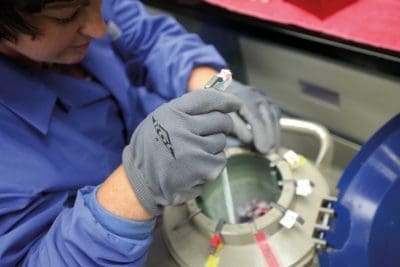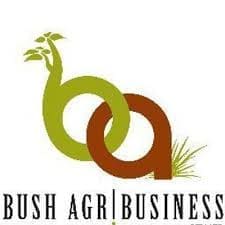AI has been generating a lot of discussion lately – not just Artificial Intelligence (an oxymoron?) but also Artificial Insemination for beef breeding herds.
We’ve had a number of clients implement an Artificial Insemination program with their heifers so, to get an understanding of the economics of the option, we analysed their data from the exercise.
 The costs are far easier to quantify than the benefits associated with undertaking an AI program. The total cost will include the price of anything additional and necessary for the AI program to take place. This includes semen straws, semen transportation and storage, preg-testing pre-AI, synchronising of heifers, AI technician costs, and additional labour (e.g. additional musters, extra time in yards).
The costs are far easier to quantify than the benefits associated with undertaking an AI program. The total cost will include the price of anything additional and necessary for the AI program to take place. This includes semen straws, semen transportation and storage, preg-testing pre-AI, synchronising of heifers, AI technician costs, and additional labour (e.g. additional musters, extra time in yards).
Theoretically, AI enables rapid dissemination of superior genetics, allowing producers to make faster progress in their breeding programs compared to natural mating. The ability to use semen from elite sires accelerates the improvement of desirable traits in the herd, promoting traits such as increased growth rates, improved carcase quality, and enhanced fertility. Those undertaking AI with heifers have also identified the following potential benefits:
- achieving a tighter and earlier calving pattern leading to better re-conception rates, heavier weaners and easier supervision
- a reduction in the required number of bulls, and
- reduced dystocia through targeting low birth weight bulls
Costs
Let’s start with the costs.
We’ve pooled the data together from the five clients in southern Queensland who undertook AI programs. In total they inseminated 1400 heifers with total incremental costs of $149,600 or $107 per heifer inseminated.
The success rate across the five averaged 53 percent conception rate, resulting in 742 pregnancies, with an incremental cost of $202 per pregnancy. The success in conceptions ranged from 46pc to 66pc, and the range in incremental costs per pregnancy was $146 to $295.
The graph below shows the composition of the cost per pregnancy. Keep in mind that this cost doesn’t account for losses from preg-testing to weaning. If we assume 5pc losses, then this increases the cost to $212 per weaner, meaning we need to realise a benefit of $212 or more for the exercise to break even – or let’s say at least one and a half times that to provide an economic return that justifies the risk.

Let’s start with the bulls. The need for less bulls is cited as a benefit, however the heifers that don’t conceive through AI, will be cycling simultaneously on their subsequent cycle, so will still require significant bull power in the mop up bulls. If we assume that:
- the bull joining percentage can be reduced by 1pc
- our bulls cost $10,000
- bulls last for 5 years, and
- are worth $2000 at the end of their life,
then this saving reduces the net cost of the program to $183 per weaner (range $117 to $295).
Superior genetics
The other benefit from bulls is through sourcing better genetics for an AI program than can otherwise be sourced for paddock bulls. This may be the case in some breeds, however there are many examples of good quality, high indexing bulls able to be purchased for similar money to average or undescribed bulls.
Indexes are effectively the weighted average genetic merit of animals for different markets and reflect the expected relative profit per animal from both sale of progeny and daughters flowing through the herd. This makes it a useful and simple measure to look at the difference in profitability between bulls.
If we make the (very questionable) assumption that AI allows access to bulls that index at the top 10pc of your breed, whereas you’d only be able to access average indexing bulls otherwise. The difference between the top 10pc and average for maternal indices of prominent breeds varies, but is up around $40 in some.
Given the bull is only half of the genetic equation, half of this benefit will flow through to the calves, so a bull which indexes $40 higher should result in $20 more profitability in his progeny. This still leaves us over $160 short, on average.
Dystocia is a very big cost, so there is significant benefit is reducing dystocia, however for this benefit to come from AI then it must be assumed that low birth weight bulls cannot be purchased as paddock bulls, also heifer-specific issues such as pelvic size are simultaneously addressed.
Tighter, earlier calving
The benefit from tighter and earlier calving requires further analysis. If the heifers are all at, or above their critical mating weight and bulls are sound and functioning, then conceptions in natural mating should be 60pc per cycle. This is higher than most of the five properties achieved through AI.
The benefit from heavier weaners is also therefore questionable.
Undertaking the AI program for the purpose of breeding your own bulls would change the benefits. Another scenario maybe, if there is sufficient herd fertility, to not use a mop-up bull and only retain those heifers that conceive through AI, the cost per weaner would still average over $130 in this example.
AI may be an economical choice for some producers, however for commercial breeding businesses we’re not sure that the benefits exceed the costs in what is an expensive exercise.
Top Studs reference tool
 Sourcing quality genetics that will take your herd forward is important, however you do this. This is why Bush Agribusiness has developed Top Studs, as a way of identifying who the breed leaders are for genetic merit and displaying their genetic profile.
Sourcing quality genetics that will take your herd forward is important, however you do this. This is why Bush Agribusiness has developed Top Studs, as a way of identifying who the breed leaders are for genetic merit and displaying their genetic profile.
Understanding the bull cost per calf is very important when assessing your genetic investment, we’ve developed an online tool which calculates the bull cost per calf and shows what proportion of genetic change in your herd is driven by bulls.
- Click here to read Beef Central’s earlier story on the Top Studs resource.



What about sexed semen? If I want some nice replacement heifers it costs marginally more than conventional, and am told conception is also a bit lower, but at least I end up with females not half the progeny being expensive steers.
Read the article.
The statement that bulls last for 5 years. Does this mean last to 5 years old or 5 breeding seasons. How many calves does a bull get in his lifetime.
What does the Dept of Ag studies say on this, quite a surprise.
Maternal benefit in syncronisation is a cumulative effect. And heifers born from the AI and all heifers born in the first 3 weeks have a greater opportunity to calve at 2 years of age. Females calving in first 3 weeks are 13% more likely to be in the herd as 8 year olds.
The price of semen is shown as $55 which includes freighting. My experience for commercial semen including develop in the volumes suggest would be closer to $25-28 for some of the best available bulls which is half of the value of your table. Experience in our regions shows the value from annually doing FTAI on heifers to superior bulls is a far better return on investment and is a profitable exercise for the cattle breeder.
That would be five years working life, Bill. Editor
Bill,
Thanks for your comments.
Five years could be a bit optimistic for bull life, if the assumed bull life is reduced to 2.7yrs as suggested then it reduces the net-cost per weaner to $158 (from $183 with all other assumptions unchanged).
I’m not saying AI isn’t a good option for some. However, based on this real world data from professionally run commercial breeding business, I can’t see how the benefits equal the costs, let alone exceed them by a sufficient margin to make it economical.
If producers are confident that there are quantifiable benefits which exceed the costs by a sufficient margin, then they should go for it, otherwise their time and money may be better spent elsewhere.
Regards
Ian
Thank you for the answer. A five year working life for an average for bulls is very optimistic when compared to other programs results. Dept of Ag suggest 2.7 years on average with 77 calves in a life span. I would be interested to hear of the justification for 5 years working life. This can skew the economic effect.
Full disclosure: Bill Cornell works in the Artificial Breeding industry. Editor
Hi Editor
whether I am in the AI Industry or not, the article has incorrect statements. Particularly saying bulls work an average of 5 years when this does not agree with research work done by Dept of Ags.
The fact that I was in the AI industry and travelled the world, have spoken on this subject, and met with University Professors that have lectured on this subject should add to what I am asking. I disagree with some aspects to the article. The questions I ask are not being answered.
Thanks for your comment Bill. The figures used in the article are from Ian McLean’s own clients’ AI examples. That doesn’t necessarily make them ‘incorrect’ – just different from your own experiences. Our genetics editor Al Rayner is preparing a follow-up article on this, and will be in touch to discuss. He will be happy to include figures that you feel are ‘representative’ from your experience. Editor/strong>